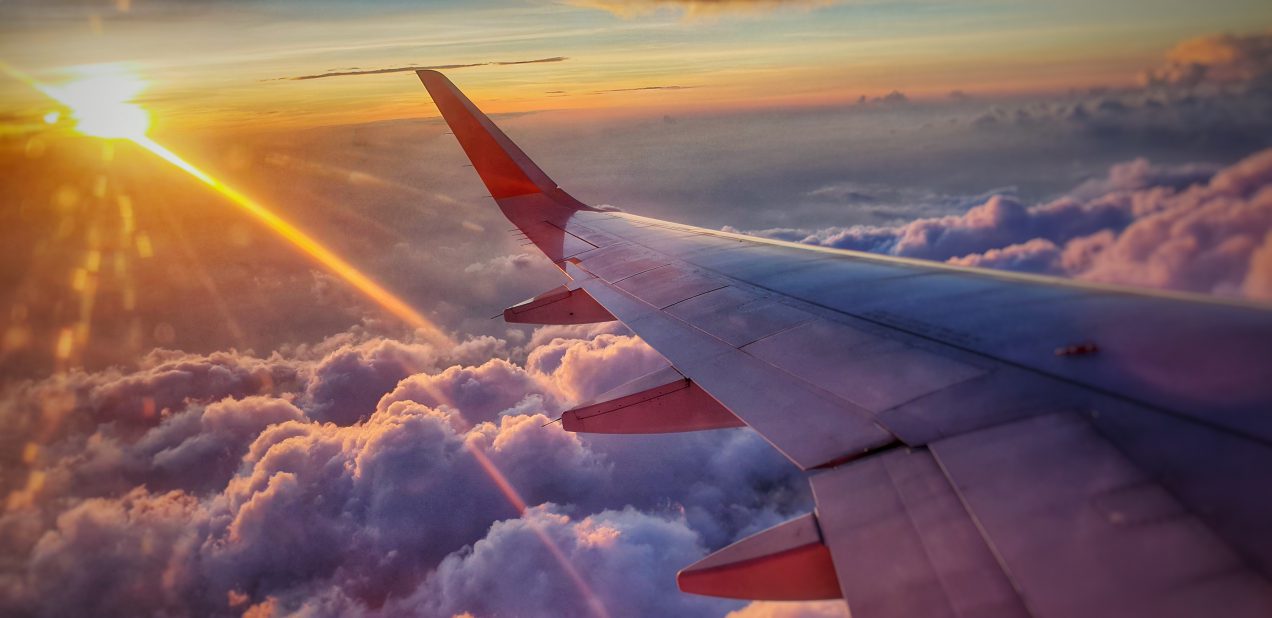
Jet Lag Tips
The majority of our Italy travel planning clients are based in North America, which is a 6 – 9 hour time difference from Italy, depending on where you travel from. So it makes sense that they request jet lag tips in addition to Italy travel tips. If you’re not sure why you’d need jet lag tips, picture this: you land in Italy at 8 AM local time. But you’ve flown in from New York, which is six hours behind. Your body thinks it’s 2 AM and that you should be be fast asleep. Instead, you get off the plane, into blinding sunshine. You’re feeling groggy and rumpled. You need to find baggage claim, get through customs and immigration lines, and locate the driver holding the sign with your name on it. (Or, find the airport train.)
Your body will take some time to adjust to the six hour time difference. Your sleep patterns, digestion and hunger rhythms will be off for a few days. Follow our jet lag tips below for a smoother transition.
Jet Lag tips: before and during travel
You can make the adjustment much smoother by following a few jet lag tips on the airplane.
- Book flights at times that allow you to rest, if possible. Unless you’re the type of person who can sleep anywhere, at any time, try to book flights that depart later in the day so that your body will naturally feel tired during the hours you’re on the plane. You’ll have more success trying to sleep on the plane if the flight departs at 7 PM compared to 10 AM. Or, if you have a layover, try to maximize resting time. For example, from San Francisco, you can fly to the east coast (6 hours) and then to Rome (6 hours); OR I can fly to a European city (11 hours) and then take a short flight to Italy. We prefer the latter since I can get a lot more rest on one 11 hour flight compared to two 6 hour flights with a layover in the middle.
- Maximize comfort on the airplane. Try to sleep if you can. Wear comfortable clothing and remember that your body temperature will drop at night so bring additional layers. Some overnight flights give passengers blankets, but don’t count on that. I travel with a light wool shawl. Bring an eye mask, a travel pillow, and ear plugs or noise-cancelling headphones. If you can fly business class and get a bed on the airplane, you’ll arrive a lot more rested, which will help you adjust faster. We recommend that you do not watch movies on the airplane the entire way over or you will arrive very tired!
- On the plane, drink lots of water. Avoid caffeine and alcohol. You can check out some of the tried-and-true “jetlag” floating around the internet too.
- Use the Timeshifter app to reset your body clock. If you want to be proactive and arrive practically already adjusted, try this app, developed by scientists and using the latest research.
- Medication. You could use a sleep aid like Ambien to fall asleep on the plane, just make sure you allow enough time for it to work, or you’ll arrive very groggy. You could use melatonin to help reset your body clock or these homeopathic No Jet Lag tablets.
Jet Lag tips: arrival day
- Stay outside in the fresh air and sunshine. Do not check in to your hotel and immediately go to sleep. Or if you do, have a short rest, but set an alarm and make sure you get up while there is still daylight outside. The first day of your trip is not an ideal day to visit a museum. Your body needs fresh air on your skin and sunlight on your eyeballs in order to adjust. Since most flights from North America arrive in Italy in the morning, and most hotel check-in times are around 2 PM, it’s very likely that you’ll drop your bags at the hotel and have a few hours to wait anyway. That’s a perfect time to head out and explore.
- Keep moving. Your arrival day is a perfect day to walk around and explore the city. Ideally, book an engaging private guide who will keep you moving and hanging on their every fascinating word. Moving your body will help you adjust to the time difference.
- Push yourself to stay awake until the evening, if possible. I know it’s tough. You didn’t sleep on the plane. It’s 2 PM local time and your room isn’t ready yet. You finally got access to your hotel room, had a shower, and that fluffy duvet is so inviting….. Try your best to stay awake until it’s dark, then crash. (But if you can’t, and you fall asleep, don’t beat yourself up.)
- Eat dinner early and go straight to bed. Ideally, you head out into the fresh air and sunshine upon arrival, and you keep moving. Then, have an early dinner and try to go to sleep when it gets dark. In Italy, restaurants don’t even open for dinner until 7-7:30 PM. We normally reserve a quick pizza dinner on the first night. But if you prefer an early bite, we book a wine bar (enoteca), which have limited menus but usually open around 6 PM. You can also take advantage of the aperitivo hour (like happy hour), especially if traveling with children.
Jet Lag tips: the first full day of your trip
- Leave the first morning open. Getting up in the morning, local time, on that first full day in Italy can be rough. Maybe you couldn’t sleep the night before. Maybe you woke up in the middle of the night and then fell back asleep at 7 AM. Remember, it’s morning in Italy but it’s the middle of the night at home. Keep your itinerary flexible to give yourself time to adjust during these first few days. We recommend that you do NOT hit the ground running with a million activities booked on your first day.
- Eat breakfast at the local time. Breakfast seems to be our body’s indicator that the day is starting. I know it’s the middle of the night at home and you’re probably not hungry. You don’t need to eat much, just try to give your body the signal that hey, the day is starting now! Then, you might want to stick to the Italian food schedule.
- Allow down time in the afternoons for the first few days. In addition to adjusting to the time difference, you’ll be tired. Remember, you lost a full night’s sleep during your travels! Set aside some time each afternoon in case you’d like to take a nap. If you don’t need a nap, great. But don’t pack those first few days with too many activities or you’ll be tired.
Jet Lag tips: traveling with babies or small children
Sorry parents, the advice above doesn’t work as well with small children. We speak from experience! Here’s my best advice:
- Ideally, do not let children spend the entire flight watching movies. Try to help them sleep on the flight. Kids are so excited about the access to movies and games that they arrive in Europe exhausted.
- Let the baby lead the time-change adjustment. Kids older than about age 2 or 3 might respond to logic. You can tell them that even though they’re wide awake, it’s the middle of the night in Italy and they should try to go back to sleep, or at least stay in their bed and rest. However, you cannot convince a baby to go back to sleep when s/he doesn’t want to. It’s a slower adjustment, but better for everyone to be on the same schedule rather than have the adults adjust quickly only to have the baby awake all night.
- Try to expose the baby to sunlight, fresh air, and movement during the Italian day time. Do not put them in the carrier or the stroller, covered with a blanket, and let them sleep while you explore. Remember, they will be up all night because their bodies are telling them its day!
Jet Lag FAQ: How long will it take me to adjust?
It allegedly takes one day per hour of time difference for the body to get fully adjusted. So for a 6 hour time difference, it would take 6 days for the body to completely adjust. That might be based on science, but in my experience, it takes about half of that, and less if the guidelines above are followed.
Also, the excitement of a long-anticipated dream vacation produces a lot of adrenaline that goes a long way. Many of our travelers tell us that they do follow the tips above, but then due to the excitement about their trip, they hardly notice jet lag at all. We often find day 2 the toughest. On arrival day, we run on adrenaline. On day 1, we follow this advice above. But by day 2, we want to be adjusted already. We’ve got plans!
Jet Lag related FAQ: Can’t I get early check-in at my hotel?
Okay this isn’t specifically about jet lag, but this question comes up with almost every client. Hotels in cities with international airports (Rome, Venice, Milan) rarely allow early check-in. This is because the majority of international flights arrive in the early morning so everyone wants early check-in. Thousands of people land in Rome at 7 AM every single day, and they would all love access to their hotel room at 9 AM. Unless you have ultra-VIP status, the hotel will tell you that the way to get access to your room before the official check-in time is to book the room for the previous night.
Did we miss any jet lag tips? Please share in the comments!


